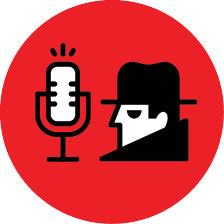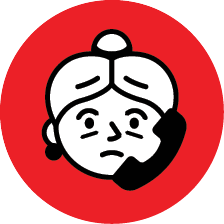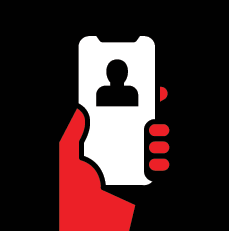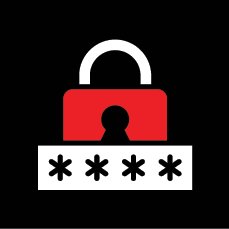Cover Story

Operating out of every corner of the globe, criminals are bombarding older Americans with emails, phone calls, texts and letters, all trying to steal as much of our money as possible. Consider that 2.6 million Americans—roughly equal to the population of Chicago—reported losing roughly $10 billion to fraud last year. And that’s merely the reported cases.
We would argue that given its pervasiveness and cost, consumer fraud represents the largest crime spree in the history of our country.
For several years now, we’ve turned over the April edition of the AARP Bulletin to fraud coverage, as there’s always so much new information to report. But our message remains hopeful. Law enforcement and private businesses have never been more engaged in the fight against fraud than they are right now.
The real secret weapon against fraud, though, is you. Being aware of what is happening and knowing the red flags of scams when dubious offers come your way are the very best ways to put a successful end to this crime spree. Here’s fresh ammunition to help you—and all older Americans—defeat these foes. —The Editors
THEIR STRATEGIES
SIX FAST-GROWING SCAMS COMING YOUR WAY
Criminals are using the latest technology and a whole lot of creativity to come up with fresh ways to steal from you. These newly minted frauds are on the rise right now
BY PATRICK J. KIGER

CHECK COOKING
In recent years, check washing—in which thieves steal paper checks from mailboxes, wash the ink off with chemicals (leaving the signature), then fill in a new amount and payee—was the big concern. Now it’s check cooking, in which thieves take a digital picture of a stolen check, then use commercially available software to alter it. “It looks very real, even with the watermarks and all,” explains Michael Bruemmer, vice president of data breach resolution and consumer protection at Experian. Criminals can then print a new phony check or deposit the altered image using a bank’s mobile app.
STAY SAFE: Learn how to pay bills and send money to loved or trusted ones with electronic transfers from your bank. If you truly prefer to mail paper checks, drop them off directly at the nearest post office rather than using a neighborhood mailbox. And continually monitor your checking account for suspicious transactions.

VOICEPRINTING
Through technological advances, thieves can capture a recording of your voice and then use a software program to generate an imitation “deepfake” version that lets them impersonate you. “That voiceprint can be used to access your insurance or financial institution,” Bruemmer says. In particular, crooks have been using deepfake voice copies to call banks and request that funds be transferred to an account they control.
STAY SAFE: Accept that the days of phone conversations with anyone other than family or close friends are coming to an end.
“If someone outside your circle needs to get hold of you, they can text you,” Bruemmer says. He warns that even calls that appear to be from known numbers could be coming from a phone that’s been stolen or had its SIM card cloned.

CELEBRITY IMPERSONATION
During the pandemic, fans became accustomed to a constant social media presence from celebrities. Scammers have tapped into that. “You’re on Instagram or Facebook, and someone pretending to be Celine Dion or her manager reaches out to you,” explains Amy Nofziger, director of victim support for AARP’s Fraud Watch Network. “The fake manager might say, ‘Celine loves your comments. She’d love to talk to you. Here’s her private account.’ ” After you connect, the talk gradually turns to how the celebrity’s fortune is tied up in a lawsuit, and she could use a loan.
STAY SAFE: If you get a direct message from someone claiming to be a performer or superstar athlete or their agent, be extremely skeptical. It’s almost certain to be a scam.

MULTISTAGE GRANDPARENT SCAMS
This is a new version of the classic grandparent scam, in which an impostor pretends to be a grandchild in trouble who needs instant money for bail, a car repair or something else. In this more organized approach, criminals staff call centers with young people who are paid a few bucks for every older person they can deceive. Part of the gimmick is for the impostor grandchild to provide a case number. “When Grandpa calls [the supposed authority], they say, ‘Oh, do you have the case number?’ ” explains Aaron Foss, former chief executive and founder of Nomorobo. It’s a subtle psychological trick to make the fraud seem more credible. Some scammers have a coconspirator pose as a courier and go to a grandparent’s home to pick up the money in person, according to Steve Baker, a former Federal Trade Commission official who publishes the Baker Fraud Report newsletter.
STAY SAFE: If someone calls you from an unfamiliar number claiming to be a family member in trouble, the Federal Communications Commission recommends that you hang up, then call or text the family member’s number to see if the person is actually in trouble. If they don’t answer and you are concerned that the emergency could be real, contact other family members or friends.

DELAYED-ACTION SWEEPSTAKES
Those con artists who call or write to say that you’ve won a fabulous fortune have come up with a new variation. Instead of trying to get you to pay taxes or other fees in advance to collect the nonexistent prize, the scammers will ask for personal information so they can “validate” you and set up the payout. Then, instead of quickly looting your bank account, the crooks may write small checks on your account to see whether you notice the fraudulent activity. If you don’t, they’ll continue to use the account to obtain credit cards and lines of credit in your name that they can siphon off, giving them a potentially bigger payday down the road.
STAY SAFE: There are extremely few legitimate sweepstakes with large cash prizes. If you get a call claiming that you’ve won one, the safest bet is to just hang up. And never, ever provide any personal information.

PARIS OLYMPICS SCAMS
With the Paris Games coming up this summer, experts predict a revival of the fake emergency scam, which works like this: A scammer hacks someone’s email account, and shortly after, all of that person’s contacts will receive the same message—something to the effect of, “Hey guys, I’m over in Paris, and my wallet got stolen! Can anyone please help me out by sending gift cards or a Venmo deposit?” It’s a potentially convincing ruse.
STAY SAFE: Resist the urge to react immediately if you hear from a friend in Paris—or anywhere—needing instant cash. Instead, try other ways to contact the person who supposedly is in need, such as calling them on the phone.
Patrick J. Kiger is a contributing writer for AARP. He has written for the Los Angeles Times Magazine, GQ and National Geographic.
YOUR DEFENSE
Do These Things Today. Be Safer Tomorrow
An updated to-do list to make it much harder for scammers to reach you

Open your iPhone’s contact list and add your family, friends, doctors and other important numbers. Then go into your phone settings and turn on the setting for “silence unknown callers.” This will send any caller who isn’t in your contacts list directly to voicemail.

Every few months, revise the passwords on your financial accounts. Your best bet is to use a passphrase: Ilovemy17dogz! is much stronger than Scruffy23. Keep track of passwords in a highly secure password manager or by writing them down and storing them safely.

Make sure you are signed out of any financial apps on your phone—credit cards, financial institutions and peer-to-peer apps such as Venmo, CashApp or Zelle. Also make sure your account settings require security measures such as a PIN, fingerprint or facial recognition. This ensures that if your phone is stolen, the thief will not have access to your money.

Be skeptical. Many criminals use friendliness, compassion and kindness as their persuasion method, rather than fear and intimidation. Likewise, scammers create a sense of urgency to get you to act out of emotion rather than logic. If you feel pressured or manipulated, walk away.

Audit your wallet or purse. That means remove cards and information you don’t need to carry (such as your Social Security or Medicare card). And make copies of anything you do need to carry (front and back) and store in a safe place at home.

Add the AARP Fraud Watch Network Helpline phone number into your phone right now, so you’ll have it if you need to call us to report a scam attempt or get more advice on how to stay safer from the people out there trying to steal your money and identity: 877-908-3360.

Routinely monitor your credit report. Some banks or credit cards offer this as a free service. You can also go to AnnualCreditReport.com or call 877-322-8228 to get free reports from the big three credit bureaus. Watch for unusual activity; if you see any, report it immediately to all three bureaus and appropriate financial institutions.

Check your social media settings to make sure you have your accounts set to private. This allows only people you choose to trust to view your pages and contact you.
Amy Nofziger is the director of AARP’s fraud victim support. Mark Fetterhoff is a senior adviser on the victim support team.
PHOTO ILLUSTRATION BY TYLER COMRIE; ICONS BY ELIAS STEIN. ON THE COVER: FROM TOP: PEGGY CORMARY; GETTY IMAGES; FONT: ALHOVIK/SHUTTERSTOCK
SWIPE FOR MORE >